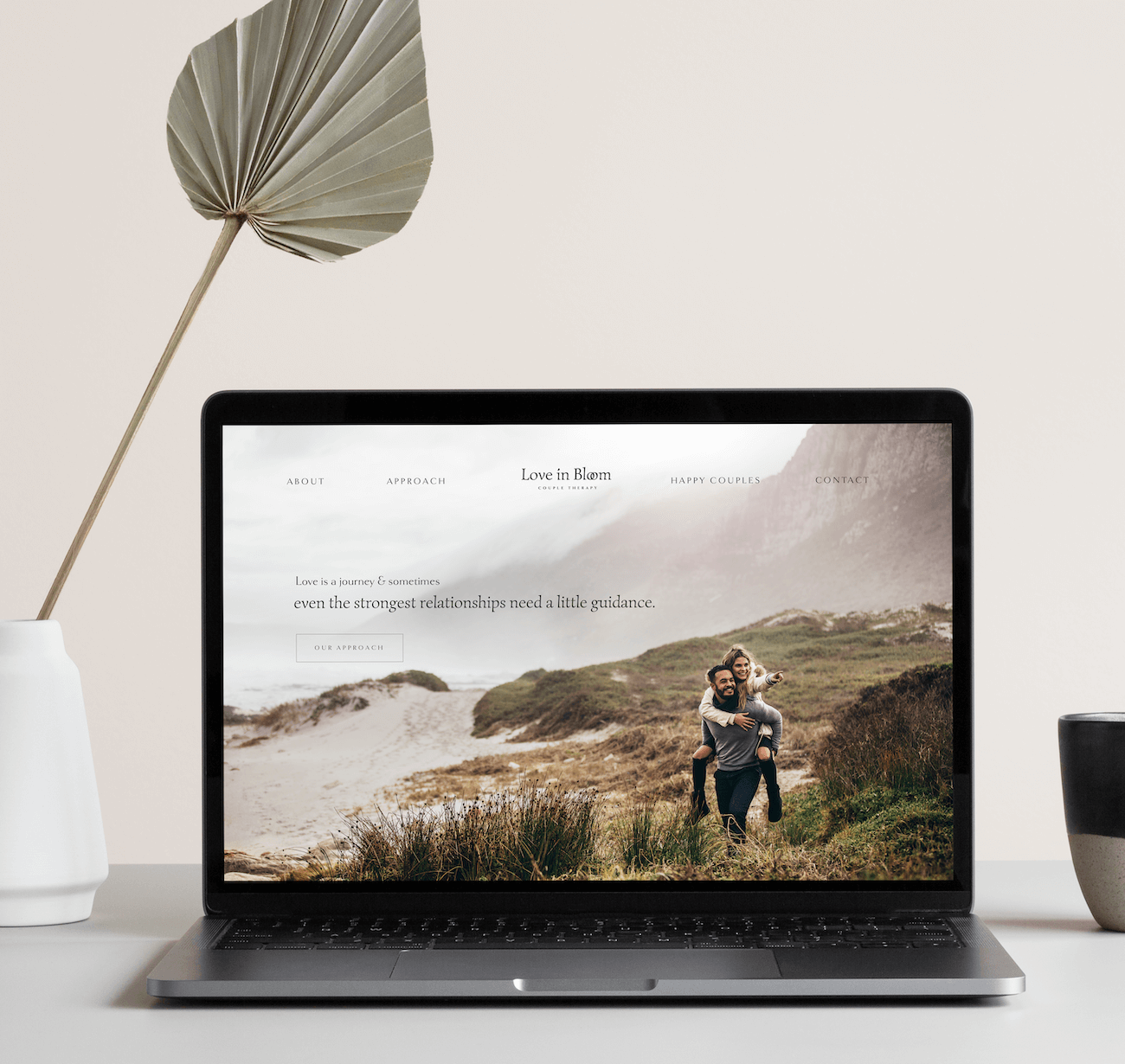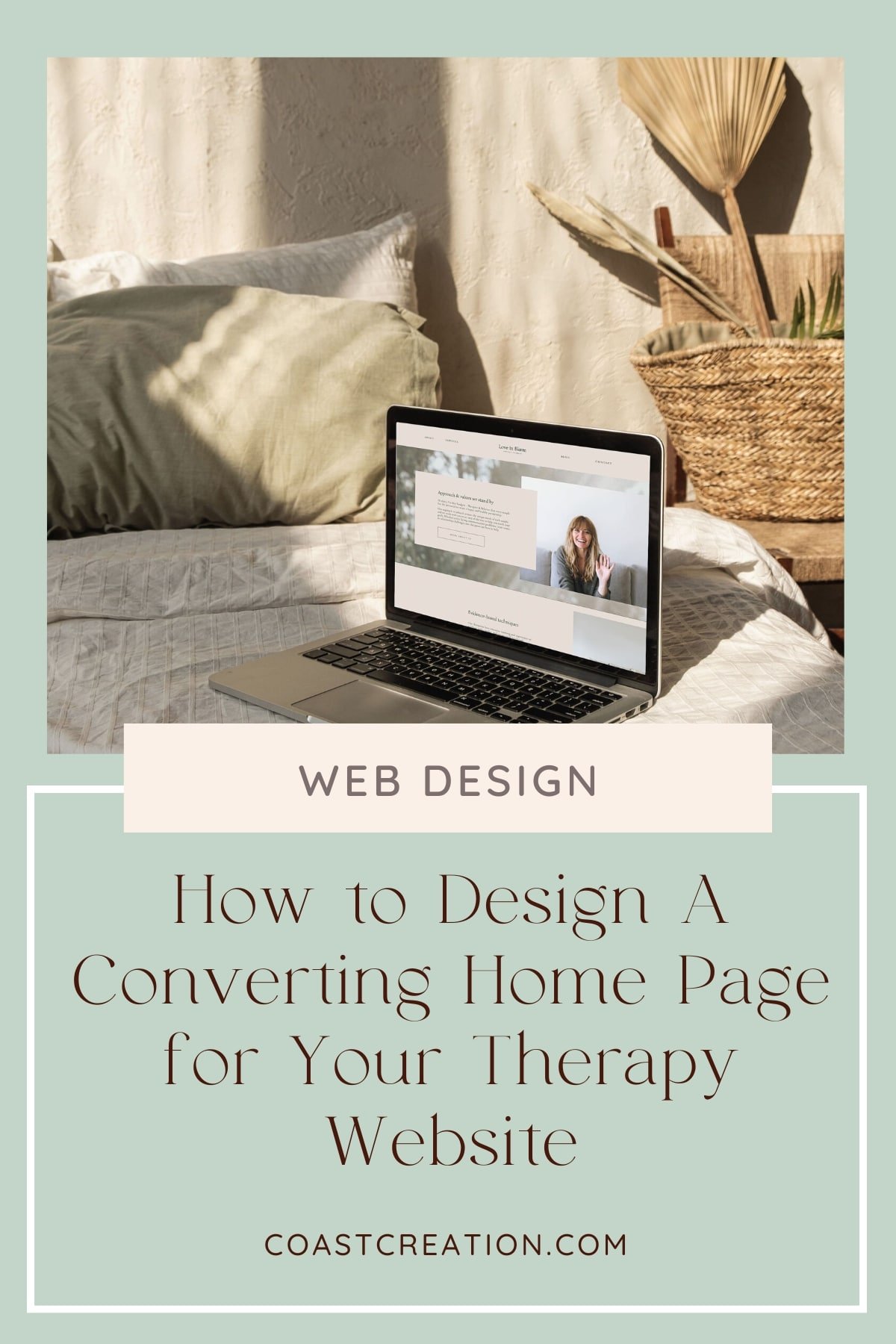Best Tips And Tricks for Designing Your Therapy Website
Creating your website as a therapist is one of the many things you cannot avoid when starting your own private practice. As a therapist or counsellor, you want to create a connection-driven, warm and user-friendly experience on your website that draws in clients because your visual appearance can already capture your warm personality. In this article, you can find out about the key elements of a well-designed therapy website and learn tips and best practices to help you create a website that meets the needs of your users.
Have A Clear And Intuitive Website Navigation
Organize your website in a logical and user-friendly manner, ensuring that visitors can easily find the information they need. Your website should be clear, intuitive, and easy to use. The navigation menu should be located in a prominent place, such as the top of the page, and include clear labels for each page.
good-to have header navigation pages are:
There are a few pages a therapy website should have, these are:
About Page
- This page tells your story. Share why you started your private practice and tell your story as a therapist.
Services
- This is where people learn more about what you offer as a therapist. Write about your therapy services, what they include, how they help clients, and the service packages you offer, including prices.Approach
- This is where you share your therapy approach - how are you going to practice? Which tools and science theories are behind your practice?Contact
- This is where potential therapy clients can get in contact with you. Include a contact form that gets directly send to your email or you can include a booking link or even directly sell a session or package and collect the payment straight from your website.
👉 Not sure how to write a captivating and emotionally connecting about page for your therapy website? Learn everything you need to know in this article.
Create a Clean and Organized Navigation
On your therapy website, you want users to easily and intuitively find what they are looking for. For this, try to keep the header navigation clean with a maximum of 6 Navigation Items. If you have more navigation items you like to include on your header navigation, try to think of a good folder structure that makes sense to people and make use of dropdown menus.
Drop-down example for different services
Drop-down example for different client groups
Ensure It’s Visually Pleasing With Branding And A Captivating Visual Identity
Use high-quality images, videos, and graphics that enhance your website's visual appeal. Select visuals that evoke emotions and create a welcoming and comforting atmosphere for potential clients. Great images are those that show images of people looking like your ideal client after a successful therapy session. For example, is you are a marriage counsellor or couple therapist, show images of happy couples on your website. Try to find images that are realistic. Some stock photography is a bit over the top – nobody needs to see a couple playing the scene of Titanic to showcase they are happy (I bet you know what I mean).
Customize the colors, fonts, and imagery to create a cohesive and visually appealing brand identity. You can either hire a brand designer to help you with this or try to craft your own design on Canva.
👉 Read about the essentials on how to create a captivating impression on your website by avoiding these crucial website mistakes here.
An Approachable and Professional Color Scheme
The color scheme you choose for your therapy website can have a significant impact on the overall user experience. It's important to choose a color scheme that is calming and soothing, as this can help create a safe and supportive environment for users. Soft, neutral colors, such as blue, green, and gray, are popular choices for therapy websites. Try to find a good match between something optimistic and calming to support your approach as a therapist. Optimistic colours are soft yellows and organges while greens and blues can be calming and look professional.
Example of do’s and don’ts therapist color palettes:
Have Clear And Engaging Call-To-Actions
Every page has multiple “call-to-actions” where website visitors are asked to take action in term of clicking on a button or booking a service. This helps your website visitors to navigate through the website content. Include clear and persuasive buttons messages or forms throughout your website to encourage visitors to contact you or book a session. Use language that instills trust and conveys the benefits of your services. Try to avoid acceleration marks and the use of all caps words as they give the impression that you are shouting to your audience. If you like to highlight any words, underlines or cursives are a good choice.
Good Call-to-action Examples:
Take the first step towards healing and book your therapy session with us. Let's explore how therapy can support your unique needs.
Start your therapeutic journey now and experience the transformative power of counselling in a safe and nurturing environment.
Let's work together to develop coping strategies, foster resilience, and create a life filled with joy and fulfilment. Schedule your appointment here.
Discover the strength within you and overcome obstacles with the support of a compassionate therapist. Contact us to get started on your path to a happier, healthier you.
Need some more help to prep?
Get this free Website Prep Guide + Checklist
FREE Guide and Checklist
to set your website up for success
Learn what you should consider before you start building your website or hire a website designer
Learn the essentials for a successful and converting website
Craft Clear and Engaging Content
Craft compelling and informative content that communicates your unique therapeutic approach, specialties, and areas of expertise. Share client success stories and showcase your empathy and understanding through your words. You can add a blog on your therapy website on which you share case studies, video resources or the newest research to help users learn more about mental health and the benefits of therapy.
Especially when looking for an intimate service like therapy, people aim to find the right fit that makes them feel heard, seen and at ease. This is why your “about page” is the most important one on your therapy website. Leverage your about page to create a authentic connection through your own story – why you became a therapist, how you go about it and what your goal is for your clients.
👉 Not sure how to best write your own about page? Have a look here for guidance and inspiration in this article.
Show Trust Signals - Share Testimonials
Adding trust signals, such as certifications and accreditations, on your therapy website shows users that your therapy services are credible and trustworthy. You can include contact information, such as a phone number and email address, to help users feel comfortable reaching out to you. Other trust signals are videos or articles from you at conferences or even introductory videos on your website showing you with your clients or simply introducing yourself.
Integrate An Easy-To-Contact and Scheduling Integration
Provide a seamless experience for potential clients to contact you or even already schedule appointments through your website. For this you can integrate contact forms, online booking systems, or live chat features into their website.
In conclusion, designing a therapy website requires careful consideration of the user's needs and goals. By focusing on user-centered design, intuitive navigation, a calming color scheme, clear content, accessibility, and trust signals, you can create a website that supports the mental health needs of your users. With the right design, you can help individuals take the first step towards improving their mental health and wellbeing.
If you are looking for support to build your website - have a look at our website services and portfolio.














